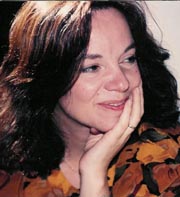
Slipper
Not the fairy tale you remember.
Heart of Stone
Winner of the Vondel Prize for Translation
Author, novelist, and translator, Hester Velmans is a multi-talented writer whose original work spans a wide range of topics, genres, and audiences. Her novels entertain adults and youngsters alike, while her contributions to biographies and non-fiction books cover a number of topics that deserve critical attention.
Velmans is well known for her translations from Dutch into English of works by Renate Dorrestein, Lulu Wang, Isabel Hoving, Jacqueline van Maarsen and other acclaimed writers. Velmans was awarded the Vondel Prize for Translation for Renate Dorrestein's A Heart of Stone while her translation from French into English of Bernard du Bucheron's award-winning The Voyage of the Short Serpent has attracted great attention.

Slipper is Velmans' first foray into historical fiction. Set in 17th century England and France, this original novel spins an engaging tale that challenges many of the stereotypes and legends of the age. This is the story of Lucinda, a fictional heroine who is reputedly the inspiration for Charles Perrault, a little-known historical figure and a courtier to Louis XIV. It was Perrault who created the well-loved fairy tales Sleeping Beauty, Puss in Boots, Tom Thumb, Little Red Riding Hood and Cinderella to entertain the ladies at the Palace of Versailles.
This is not the fairy tale that you remember. Written for adults, Slipper is a fast-paced adventure that begins among the grand estates of the English aristocracy, descending briefly into the teeming streets of London, before moving on to the trenches at the Battle of Maastricht. After breaking camp through the Dutch countryside, our heroine finds refuge along the quiet avenues of Amsterdam, then embarks on yet more adventures while tackling palace intrigues in Paris.
Encountering a wonderfully entertaining cast of characters along the way, Lucinda takes command of her destiny, rising from a lowly orphaned cousin to a genuine lady in her own right, bowing to the needs of her situation when necessary to survive, yet never surrendering to those seek the advantage. Her story is told with good humor and wit, occasionally bending towards the ribald whilst poking fun at many of the social norms that characterized the period. Throughout all of the trials and tribulations, we easily recognize many modern traits that have followed us down through the generations.
Velmans' first book written for children, Isabel of the Whales, combines an entertaining story with a theme for empowering young girls and boys to influence the natural world. Its sequel, Jessaloup's Song, reunites the two principal characters in a second ecological fantasy adventure.

Jessaloup's Song explores teenage love amidst an impending natural calamity while celebrating the ties that bind all living creatures. In this adventure, Velmans turns the tables on a classic theme by portraying a young humpback whale who sets out to save the human race from certain disaster. Isabel, the young girl who had once lived amongst a pod of whales, is reunited with her friend Jessaloup, who this time is transformed from a whale into a human boy. The two face daunting challenges in convincing those living on land to seek protection from a destructive tsunami that is heading in their direction. To the delight of many young readers who despaired when Isabel and Jessaloup were separated at the end of the first story, Jessaloup's Song brings the two back together in a race against time. The spirit of adventure continues throughout a compelling and imaginative plot with a satisfying twist involving Isabel and her family, which reinforces the theme for all people be true to themselves and to one another.
In writing these original children's adventures, Hester Velmans draws upon her experience in research and journalism. She was motivated to create a world where her own young daughter could overcome many of the frustrations felt by those in their early teens by magically becoming one of the most powerful creatures on earth. Velmans' research for these novels brought her together with leading scientists, who by their own admission revealed that much has yet to be learned about marine life and about whale species in particular. These gaps in current scientific knowledge highlight a very real need to encourage budding young minds to bring new insights into the mysterious lives of marine mammals. The wonder of life in the ocean allows the writer to let her imagination roam free while weaving the natural world into a wonderful fantasy that is certain to captivate young minds.
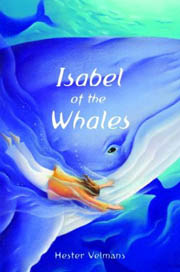
Hester Velmans' first sole creation, Isabel of the Whales, is an "eco-romance," bridging fantasy with reality in discovering the fascinating behavior and life-cycle of the humpback whale. Written for children with the idea of empowering young girls and boys to think of themselves as mightier and more capable than they may feel, it follows the story of a young girl who falls overboard while on a whale watch excursion and suddenly finds herself turned into a humpback whale.
Thoroughly researched and based on scientific observations, this fantasy adventure centers around the main character Isabel who, after being adopted by a pod of humpback whales, is transformed by life in the sea and the challenges of survival. Discovering that she is to become their chosen emissary, she becomes torn between her previous life on land and the knowledge shared by her adoptive family as they migrate from the North Pole to the equator. "Watch out Little Mermaid, here comes Isabel" declares Kirkus Reviews about this exciting new book.
Isabel of the Whales has been introduced in a number of classrooms with an encouraging response from young readers to the plight of the humpback whale. One young reader asks some serious questions about the plot:
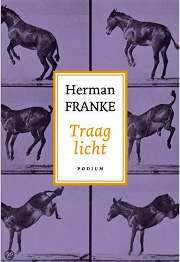
Traag Licht by Herman Franke is the third and final installment of a planned, open-ended, and multi-volume novel that was completed days before his death from prostate cancer. This series of open-ended novels weaves a continuous stream of first-person narratives together with random recollections, impressions, and planned intentions. Five years after his untimely death, Herman Franke has left and indelible intellectual legacy on Dutch literature that continues to reverberate throughout the literary community in numerous articles, lectures, and panel discussions.
After learning from his publisher that Franke's greatest regret was that his work had never made it into English, Hester Velmans was awarded a grant from the The National Endowment for the Arts in the United States for Traag licht to be translated into English under the title: Slow Light.
This novel adopts a daring, unorthodox narrative structure that describes Franke's determination to complete his ambitious task with the full knowledge that the final curtain was descending. Promising himself that all of his untold stories would find their way into the open-ended serial novel, the author finds freedom from every constraint that had previously held him back to 'pierce the superficial surface of life in order to probe the reality that (he) suspected existed underneath.' His reality reveals dark desires, where solutions are discovered to all of the most existential of mysteries.
A brilliant and uniquely idiosyncratic style characterizes the entire body of work written and created by Herman Franke. His background as a criminologist led to his observation the all writers are criminals, explaining that "they have the guts to recognize the evil in themselves and to acknowledge it in their stories."

De consequenties by Niña Weijers has attracted critical acclaim from across the Dutch and Flemish literary spectrum, winning many awards and prizes including the Anton Wachter Prize 2014 for best first novel. The novel's style has been compared favorably to that of Kurt Vonnegut, while offering an inventive story set within the culture of contemporary fine art. Hester Velmans' translation into English of The Consequences expertly captures the rollercoaster storylines and plots that are woven into the novel.
A coming-of-age story in the Bildungsroman genre, The Consequences centers around a principal character, Minnie Panis, a young and successful modern artist. While her latest art project yields unintended consequences that are both surprising and profound, a series of physical and personal exploits that follow her through life lead Minnie to question her own existence. The artist is very much the central figure of the story, who engages the reader with a sense of mystery as she explores the basic question of her own identity in many different facets of life.
Weijers engages the reader with a firm grip, winding in many directions through a world that is characterized as "simultaneously real and absurd," where both art and life are explored in tandem together with their unexpected consequences.
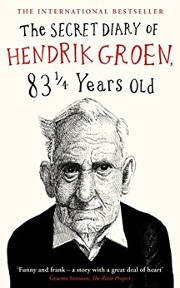
The lighter side of ageing is explored by Hendrik Groen in the highly entertaining saga, The Secret Diary of Hendrik Groen, 83 1/4 Years Old. Translated into more than 20 languages, this delightful tale of a year in the life of our heart-warming pensioner is brought to life with a masterful English language touch by Hester Velmans. Groen began his diary on the literary website of Torpedo magazine, sharing his account of daily life in a retirement home with humor, honesty, and charm. The novel generated a cultural phenomenon in the Netherlands and quickly became a world-wide sensation.
The story tackles the banality of daily life, as well as more serious social issues facing the elderly, treating these issues with wit, charm, and dignity. As Holland's most unlikely hero, Hendrik Groen sets out to write an expose of life under the care of a bureaucratic institution while coping with the experiences of old age. We follow Hendrik's exploits from setting up the anarchic 'Old-But-Not Dead Club,' to his newly discovered romantic interest in Eefje, a recent arrival to the residence.
Realistic characters and self-deprecating humor offer a refreshing outlook within an ageing society. Far from dwelling on the debilitating effects of aging, The Secret Diary of Hendrik Groen provides us with the knowledge that friendship, selflessness and dignity remain as the essence of human experience.

The sequel On the Bright Side: The New Secret Diary of Hendrik Groen, 85 Years Old is as entertaining as ever, bringing to life an entirely new chronicle recording Henk's adventures over the course of his 85th year.
We return to his retirement home where the 'Old-But-Not-Dead Club' finds itself in the unexpected position of having to rescue the home from demolition, despite the director's continuing efforts to curtail the group's unseemly antics. In response, the eight-member club swings into action to infiltrate the retirement home's residents committee, blunting management efforts to shut down the home, and preventing group members from being relocated to other facilites.
Daily life for Henk Groen is anything but routine. His diary recounts a good share of outings, dinners, and travel beyind the connfines of the group residence, while sharing the experiences of his companions as health concerns increasingly come to the fore. We begin to realize that the elderly residents of this retirement home once held prominent roles and contributed much to society during their lifetimes.
The book contains many memorable quotes as it weaves a tale of daily travails with a refreshing outlook on life, local and world events, and how to make the best of our time remaining. It is both entertaining and uplifting, revealing human nature at its best, while serving as a reminder of the dignity and respect entitled by all members of society.

In her English-language debut, the internationally renowned Dutch author Marion Pauw is revealed to a new audience as a master of suspense. Girl in the Dark was awarded the annual Golden Noose Award for the best Dutch crime novel. Daglicht, the Dutch title, has also been made into an acclaimed Dutch film. Translated into English by Hester Velmans, Girl in the Dark is a riveting and intense thriller rising from a compelling domestic drama.
The novel centers around Iris, a single mother and lawyer who discovers that she has a brother whom she had never known. Her brother Ray suffers from autism and has been imprisoned for a brutal murder that Iris believes he did not commit. Already contending with a highly demanding personal and professional life, Iris endeavors to discover the truth behind her mother's secrecy about her newly discovered sibling and the facts surrounding the crime for which he was convicted. Difficulties in Iris' search for truth are compounded by Ray's naivety and his inability to engage with others, while the investigations are also being obstructed by a distant and judgmental mother. The riveting plot brings readers to the edge of their seats as the investigation reaches its climax with a dramatic twist.
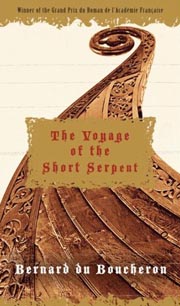
Bernard du Bucheron creates a magical land with characters who come alive in The Voyage of the Short Serpent, a story about truth, obsession, and the myth of utopia. Written in a jubilant mock-archaic French, Court Serpent by Bernard du Bucheron won the Grand Prix of the Academie Française for this highly original story set in a fourteenth century colony subsisting on a frozen Greenland outpost.
After communications with the Greenland colony are lost, a ship named the "Short Serpent" is launched with an abbot at its helm to reestablish contact and to revive the inhabitants' faith. To their horror, the colony's inhabitants are discovered to have reverted to a very primitive way of life exhibiting excesses of filth and depravity to which the crew of the "Short Serpent" begin to succumb.
His writing style is described as elegant, compulsive, and increasingly unhinged, in creating a masterpiece about human morality in inhuman conditions. While the language and style make this book a memorable read, The Voyage of the Short Serpent was also a challenge to translate. The author praises the English edition translated by Hester Velmans :

The Dream Merchant by Isabel Hoving is winner of the Netherlands' most prestigious children's book award. As a fantasy full of action and adventure, this book sweeps readers along on a riveting journey through a re-imagined past. Trapped in a place between dream and reality, the book's heroes find their way back through a trail that leads them right into the very heart of the human imagination and to the furthest ends of time itself.
The principal character is an average twelve year old boy named Josh, who is something of a dreamer and who sometimes steals things. Together with his friend Baz, the boys are teamed up with Theresa at an old company that has discovered how to sell fantastic goods and concepts through our collective unconsciousness. Whenever the three children fall asleep, they are transported into the dream world that has been created by the company and soon discover that they are trapped there, haunted by nightmarish monsters.
During their journey back to the dawn of time to find the magical tembi, Josh and his friends must each make a momentous decision or slay a private demon before returning home, while two company employees seek to use them for their own personal gain. It is a modern fairy-tale that sets greed and selfishness against the search for truth and reconciliation.
The imaginative style translates well into the English edition. It is a fascinating read, with a rich plot filled with interesting characters who catch your attention, acting out their dreams in far out and imaginative places.
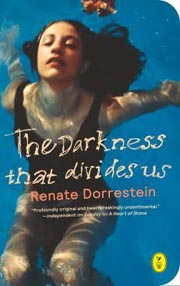
The Darkness that Divides Us is the fourth novel by the popular Dutch author Renate Dorrestein to be translated into English by Hester Velmans. The tale combines a family drama with a touch of mystery as it takes up the story of a young girl growing up in very compelling circumstances. Beginning in a small Dutch village, the setting of the novel then moves to the Outer Hebrides, where Lucy, the main character, teams up with a gang of adorable young hooligans whose bewildering misadventures both astonish and bemuse.
The world does seem a very different place when seen from the children's perspective. At times intense with a dark undertone, there is a poignancy to the characters as the reader is drawn into their ongoing emotional development. There are surprises at every turn in a style that successfully blends different genres with a dramatic plot, psychological trauma, and the popular murder mystery.
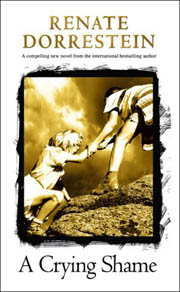
Velmans continues her critically acclaimed translation of Dutch author Renate Dorrestein in A Crying Shame, a heart rendering story of the a hostile and troubling family life for two children who stow away in a stranger's automobile. The compelling emotional style of A Crying Shame is also found in Hester Velmans' previous translation of Renate Dorrestein's Without Mercy, a heartbreaking yet strangely funny, thought-provoking, and compelling novel about guilt and grief.
A Heart of Stone is Renate Dorrestein's first book to be translated into English. It tells a darkly humorous, yet ultimately compassionate tale of her character, Ellen Van Bemmel, who plunges us into the past as she leafs through a faded photo album and confronts the literal and figurative ghosts of her childhood. The story seamlessly alternates between past and present, taut with Hitchcock tension and warmed by a redemptive love story.
A thriller by Stefan Brijs, The Angel Maker explores the ethical limits of science and religion, which are haunted by an eccentric genetic research doctor. This eerie tale succeeds in getting under your skin with an intriguing character study and a plot woven with wonderful imagination. As the doctor's household begins to unravel, the story plunges towards a horror-filled climax that captivates the reader well beyond the midnight hour.
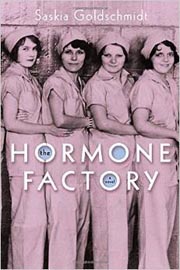
As fiction, The Hormone Factory is certain to raise the ambient room temperature. Saskia Goldschmidt's novel has been described in many vivid terms, reflecting the character of her main protagonist Mordechai De Paauw. The story is based on historical events that led to the production of the first female birth control pill, among other products. It is a lurid tale, told as a first person narrative by Mordechai during the last days of his life.
Twin brothers transformed a meat packing business into a large pharmaceutical company, originally by producing replacement hormones for humans from the animals that were being butchered, and later by establishing a highly prosperous research laboratory. Set during the pre-war years leading up to the Nazi occupation of their home country Holland, the two brothers, and many employees of the company producing the hormones, were Jewish. Mordechai describes in his own words much of the villainy that he was responsible for by personally testing his products on female employees and by using these same women to satisfy his own sexual appetite.
The novel is intended to be disturbing, with the depravity of the main protagonist becoming evident from the start. The combination of human excess set within emerging historical circumstances have created an original plot that can be unsettling while also inducing a sense of morbid fascination.

The Lily Theater, by Lulu Wang offers deep insight in the life of a Chinese intellectual prisoner during the cultural revolution. The book emphasizes the class system that Mao was trying to dismantle but which seems to have survived despite his efforts to raise up the peasants and suppress the intellectuals. Written from the eyes of the only child in a reeducation camp for top intellectuals, its young heroine does not seem to be able to adapt to the cruelty around her and finds herself at odds with her country's culture. The author gives us a child's view of how Mao was literally worshipped as a revolutionary deity.
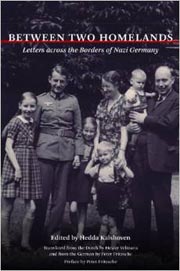
Between Two Homelands is more than a collection of letters between members of a family living in different countries. It is a reflection of the daily lives and aspirations of people living through one of the most tragic periods of human history. Covering the period leading up to and during the second world war, this book offers a personal look at the thoughts and feelings exchanged among a family living in both Germany and Holland.
It reveals how the regime in Germany was able to garner such widespread popular support for the eventual conquest of Europe, as well as the effects of foreign occupation for people living in a conquered territory. The frequent and close personal correspondence between Irmgard Gebensleben, her friends, and four generations of her family in Germany offers valuable insights into public sentiments as the events unfold.
The collection of letters was originally put together by Irmgard Gebensleben's daughter Hedda Kalshoven, and has been edited, abridged, and annotated by Peter Fritzsche in collaboration with Hedda Kalshoven. This edition is the first English translation of the collection, originally published as: Ik denk zoveel aan jullie: Een briefwisseling tussen Nederland en Duitsland 1920-1949. Fritzsche has also included material from a newly discovered personal diary from the period written by Gebensleben's brother Eberhard, a loyal Wehrmacht soldier.

Anne Frank gave her best friend the nickname Jopie in her dairy, a nickname that allowed Jacqueline van Maarsen to keep her identity secret for many years. My Name is Anne, Anne Frank, She Said by Jacqueline van Maarsen is a moving recollection that reveals the true story about the two girls' friendship. The author is a lecturer who specializes in Anne Frank and the topic of discrimination. She offers in this memoir a first-hand view of their heartbreaking parallel lives during the second World War.
Translated from the original Dutch, this autobiographical account shares an intimate view of both Anne Frank and the van Maarsen's half-Jewish family. The two young girls, who became close friends at the Jewish school in Amsterdam, were unprepared for the menace that they were later forced to confront. Otto Frank shared the diary with van Maarsen after the war and they discussed what Anne had written. Their close family ties led van Maarsen to write Anne Frank's Heritage and to become a lecturer on the topic.

Hester Velmans contributed to her mother's autobiography: Edith's Story, a significant Holocaust memoir by a young Jewish girl who survives the Nazi occupation of Holland posing as a gentile and sheltered by a courageous protestant family in The Hague. Adapted from her teenage diaries, wartime letters, and reflections as an adult survivor, Edith van Hessen recounts her life as young girl and the events that surrounded the wartime occupation of her country.
In describing her experience while hiding from the Nazi regime in Holland, Edith's Story is a vivid and accurate account of how one girl contended with a prolonged period of severe deprivation. While those closest to her perished in the murderous reign of terror, Edith retains her sense of humanity throughout this poignant tale of suffering and survival. Now in its second edition, Edith's Story was winner of the Jewish Quarterly's Wingate Award, while the audio version of the book was recognized with the Talkies Award.




